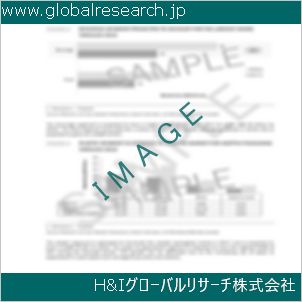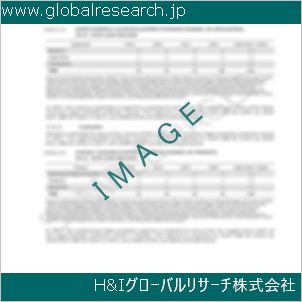Table of Contents
1 Industry Overview of Calcium carbide
1.1 Definition and Specifications of Calcium carbide
1.1.1 Definition of Calcium carbide
1.1.2 Specifications of Calcium carbide
1.2 Classification of Calcium carbide
1.3 Applications of Calcium carbide
1.3.1 Nuclear Application
1.3.2 Non-Nuclear Application
1.4 Industry Chain Structure of Calcium carbide
1.5 Industry Overview and Major Regions Status of Calcium carbide
1.5.1 Industry Overview of Calcium carbide
1.5.2 Global Major Regions Status of Calcium carbide
1.6 Industry Policy Analysis of Calcium carbide
1.7 Industry News Analysis of Calcium carbide
2 Manufacturing Cost Structure Analysis of Calcium carbide
2.1 Raw Material Suppliers and Price Analysis of Calcium carbide
2.2 Equipment Suppliers and Price Analysis of Calcium carbide
2.3 Labor Cost Analysis of Calcium carbide
2.4 Other Costs Analysis of Calcium carbide
2.5 Manufacturing Cost Structure Analysis of Calcium carbide
2.6 Manufacturing Process Analysis of Calcium carbide
3 Technical Data and Manufacturing Plants Analysis of Calcium carbide
3.1 Capacity and Commercial Production Date of Global Calcium carbide Major Manufacturers in 2023
3.2 Manufacturing Plants Distribution of Global Calcium carbide Major Manufacturers in 2023
3.3 R&D Status and Technology Source of Global Calcium carbide Major Manufacturers in 2023
3.4 Raw Materials Sources Analysis of Global Calcium carbide Major Manufacturers in 2023
4 Capacity, Production and Revenue Analysis of Calcium carbide by Regions, Types and Manufacturers
4.1 Global Capacity, Production and Revenue of Calcium carbide by Regions 2019-2024
4.2 Global and Major Regions Capacity, Production, Revenue and Growth Rate of Calcium carbide 2019-2024
4.3 Global Capacity, Production and Revenue of Calcium carbide by Types 2019-2024
4.4 Global Capacity, Production and Revenue of Calcium carbide by Manufacturers 2019-2024
5 Price, Cost, Gross and Gross Margin Analysis of Calcium carbide by Regions, Types and Manufacturers
5.1 Price, Cost, Gross and Gross Margin Analysis of Calcium carbide by Regions 2019-2024
5.2 Price, Cost, Gross and Gross Margin Analysis of Calcium carbide by Types 2019-2024
5.3 Price, Cost, Gross and Gross Margin Analysis of Calcium carbide by Manufacturers 2019-2024
6 Consumption Volume, Consumption Value and Sale Price Analysis of Calcium carbide by Regions, Types and Applications
6.1 Global Consumption Volume and Consumption Value of Calcium carbide by Regions 2019-2024
6.2 Global and Major Regions Consumption Volume, Consumption Value and Growth Rate of Calcium carbide 2019-2024
6.3 Global Consumption Volume and Consumption Value of Calcium carbide by Types 2019-2024
6.4 Global Consumption Volume and Consumption Value of Calcium carbide by Applications 2019-2024
6.5 Sale Price of Calcium carbide by Regions 2019-2024
6.6 Sale Price of Calcium carbide by Types 2019-2024
6.7 Sale Price of Calcium carbide by Applications 2019-2024
6.8 Market Share Analysis of Calcium carbide by Different Sale Price Levels
7 Supply, Import, Export and Consumption Analysis of Calcium carbide
7.1 Supply, Consumption and Gap of Calcium carbide 2019-2024
7.2 Global Capacity, Production, Price, Cost, Revenue, Supply, Import, Export and Consumption of Calcium carbide 2019-2024
7.3 USA Capacity, Production, Price, Cost, Revenue, Supply, Import, Export and Consumption of Calcium carbide 2019-2024
7.4 EU Capacity, Production, Price, Cost, Revenue, Supply, Import, Export and Consumption of Calcium carbide 2019-2024
7.5 China Capacity, Production, Price, Cost, Revenue, Supply, Import, Export and Consumption of Calcium carbide 2019-2024
7.6 Japan Capacity, Production, Price, Cost, Revenue, Supply, Import, Export and Consumption of Calcium carbide 2019-2024
8 Major Manufacturers Analysis of Calcium carbide
8.1 Manufacturer One
8.1.1 Company Profile
8.1.2 Product Picture and Specifications
8.1.2.1 Type I
8.1.2.2 Type II
8.1.2.3 Type III
8.1.3 Capacity, Production, Price, Cost, Gross and Revenue
8.1.4 Contact Information
8.2 Manufacturer Two
8.2.1 Company Profile
8.2.2 Product Picture and Specifications
8.2.2.1 Type I
8.2.2.2 Type II
8.2.2.3 Type III
8.2.3 Capacity, Production, Price, Cost, Gross and Revenue
8.2.4 Contact Information
8.3 Manufacturer Three
8.3.1 Company Profile
8.3.2 Product Picture and Specifications
8.3.2.1 Type I
8.3.2.2 Type II
8.3.2.3 Type III
8.3.3 Capacity, Production, Price, Cost, Gross and Revenue
8.3.4 Contact Information
8.4 Manufacturer Four
8.4.1 Company Profile
8.4.2 Product Picture and Specifications
8.4.2.1 Type I
8.4.2.2 Type II
8.4.2.3 Type III
8.4.3 Capacity, Production, Price, Cost, Gross and Revenue
8.4.4 Contact Information
8.5 Manufacturer Five
8.5.1 Company Profile
8.5.2 Product Picture and Specifications
8.5.2.1 Type I
8.5.2.2 Type II
8.5.2.3 Type III
8.5.3 Capacity, Production, Price, Cost, Gross and Revenue
8.5.4 Contact Information
…
9 Marketing Trader or Distributor Analysis of Calcium carbide
9.1 Marketing Channels Status of Calcium carbide
9.2 Traders or Distributors with Contact Information of Calcium carbide by Regions
9.3 Ex-work Price, Channel Price and End Buyer Price Analysis of Calcium carbide
9.4 Regional Import, Export and Trade Analysis of Calcium carbide
10 Industry Chain Analysis of Calcium carbide
10.1 Upstream Major Raw Materials Suppliers Analysis of Calcium carbide
10.1.1 Major Raw Materials Suppliers with Contact Information Analysis of Calcium carbide
10.1.2 Major Raw Materials Suppliers with Supply Volume Analysis of Calcium carbide by Regions
10.2 Upstream Major Equipment Suppliers Analysis of Calcium carbide
10.2.1 Major Equipment Suppliers with Contact Information Analysis of Calcium carbide
10.2.2 Major Equipment Suppliers with Product Pictures Analysis of Calcium carbide by Regions
10.3 Downstream Major Consumers Analysis of Calcium carbide
10.3.1 Major Consumers with Contact Information Analysis of Calcium carbide
10.3.2 Major Consumers with Consumption Volume Analysis of Calcium carbide by Regions
10.4 Supply Chain Relationship Analysis of Calcium carbide
11 Development Trend of Analysis of Calcium carbide
11.1 Capacity, Production and Revenue Forecast of Calcium carbide by Regions and Types
11.1.1 Global Capacity, Production and Revenue of Calcium carbide by Regions 2024-2029
11.1.2 Global and Major Regions Capacity, Production, Revenue and Growth Rate of Calcium carbide 2024-2029
11.1.3 Global Capacity, Production and Revenue of Calcium carbide by Types 2024-2029
11.2 Consumption Volume and Consumption Value Forecast of Calcium carbide by Regions, Types and Applications
11.2.1 Global Consumption Volume and Consumption Value of Calcium carbide by Regions 2024-2029
11.2.2 Global and Major Regions Consumption Volume, Consumption Value and Growth Rate of Calcium carbide 2024-2029
11.2.3 Global Consumption Volume and Consumption Value of Calcium carbide by Types 2024-2029
11.2.4 Global Consumption Volume and Consumption Value of Calcium carbide by Applications 2024-2029
11.3 Supply, Import, Export and Consumption Forecast of Calcium carbide
11.3.1 Supply, Consumption and Gap of Calcium carbide 2024-2029
11.3.2 Global Capacity, Production, Price, Cost, Revenue, Supply, Import, Export and Consumption of Calcium carbide 2024-2029
11.3.3 USA Capacity, Production, Price, Cost, Revenue, Supply, Import, Export and Consumption of Calcium carbide 2024-2029
11.3.4 EU Capacity, Production, Price, Cost, Revenue, Supply, Import, Export and Consumption of Calcium carbide 2024-2029
11.3.5 China Capacity, Production, Price, Cost, Revenue, Supply, Import, Export and Consumption of Calcium carbide 2024-2029
11.3.6 Japan Capacity, Production, Price, Cost, Revenue, Supply, Import, Export and Consumption of Calcium carbide 2024-2029
12 New Project Investment Feasibility Analysis of Calcium carbide
12.1 New Project SWOT Analysis of Calcium carbide
12.2 New Project Investment Feasibility Analysis of Calcium carbide
13 Conclusion of the Global Calcium carbide (CAS 75-20-7) Industry 2024 Market Research Report
| ※参考情報 炭化カルシウム(Calcium carbide、CAS 75-20-7)は、カルシウムと炭素からなる化合物で、化学式は CaC₂ で表されます。一般的には白色または灰色の固体で、無臭であり、空気中では安定ですが、水分と反応してアセチレンガスを生成する特性があります。この物質は、様々な産業で広く利用されていますが、その特性や用途について詳しく説明します。 炭化カルシウムの主な特徴の一つは、水と反応することによってアセチレンを生成することです。この反応は以下のように表されます。 [ text{CaC}_2 + 2 text{H}_2text{O} rightarrow text{C}_2text{H}_2 + text{Ca(OH)}_2 ] この反応により生成されるアセチレンは、化学合成や溶接、切断に利用される重要なガスです。アセチレンは非常に高い温度を持つ燃焼を行うことができ、そのため溶接には特に重宝されています。 炭化カルシウムは、主に二種類の製造方法によって生産されます。一つは、高温の炭素と酸化カルシウム(石灰石)を反応させる方法です。このプロセスは、約2000度の高温で行われ、電気炉が一般的に使用されます。もう一つは、カルシウムの金属と炭素を直接反応させる方法です。後者は工業的にはあまり普及していませんが、化学合成の研究などで利用されることがあります。 炭化カルシウムの用途は非常に多岐にわたります。まず、アセチレンの生成に利用されることから、溶接業界では重要な役割を果たしています。アセチレンガスは、酸素との混合により燃焼時に非常に高温に達するため、金属の切断や溶接に適しています。また、化学産業でも、アセチレンは様々な有機化合物の合成原料として使用されています。特に、ビニル化合物やポリマー製品の製造において重要な中間体となります。 さらに、炭化カルシウムは農業においても利用されています。例えば、土壌改良のための資料として利用されることがあります。これは、カルシウム成分を提供することで土壌のpHを調整し、植物の栄養素の吸収を助ける効果があります。また、炭化カルシウムを使って生成されるアセチレンは、農業における植物の成長促進にも寄与するとされています。 加えて、炭化カルシウムは水質浄化の分野でも研究されており、その特性を活かして水中の様々な化合物を吸着させる機能があるとされています。これは、廃水処理や環境保護の観点からも注目されています。 炭化カルシウムに関連する技術も進化しています。アセチレンの生成においては新しい触媒の開発や反応効率の向上が進められており、より少ないエネルギーでの生成が求められています。さらに、炭化カルシウムの安全な取り扱いや保管方法についても、多くの研究が行われています。これは、炭化カルシウムが水と反応する際に発生するアセチレンガスが引火性であるため、安全性が重要視されているからです。 炭化カルシウムの市場は、特にアジア地域での需要が高まっています。中国などの国々では、化学工業が盛んであり、炭化カルシウムの需要が増加しています。また、環境意識の高まりに伴い、持続可能な方法での製造や利用が求められるようになっています。 現在も炭化カルシウムは、さまざまな分野で幅広く利用されており、その特性に基づく新たな応用が模索されています。環境に配慮した製造方法や新しい利用法の開発は、今後の研究の重要なテーマとなるでしょう。炭化カルシウムは、農業から工業まで、さまざまな分野での進化を続けている化学物質であり、多くの可能性を秘めています。そのため、引き続き研究や技術開発が進められるべき重要な化合物であるといえます。 |
❖ 免責事項 ❖
http://www.globalresearch.jp/disclaimer












